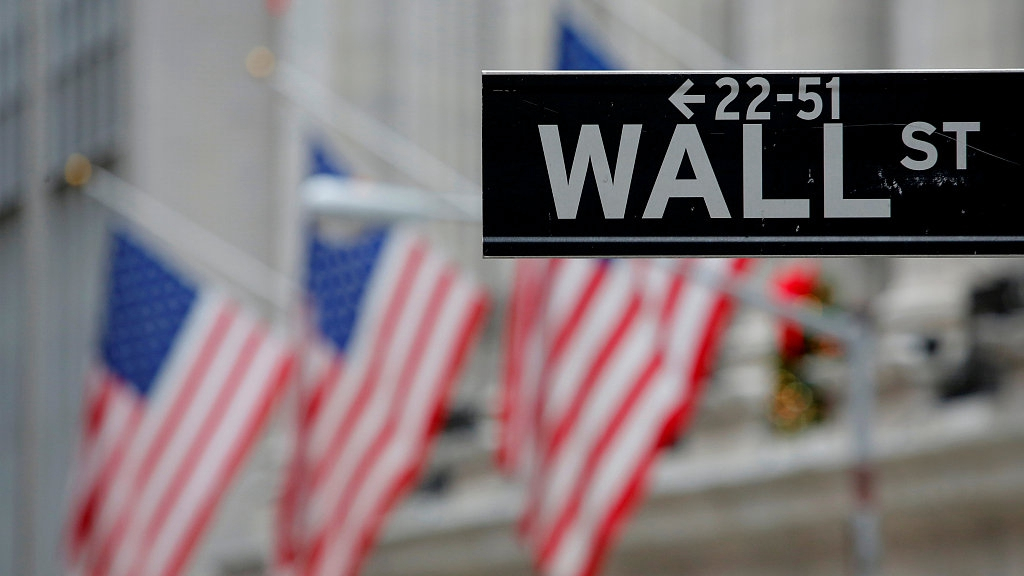Editor's note: Ken Moak taught economic theory, public policy and globalization at the university level for 33 years. He co-authored a book titled "China's Economic Rise and Its Global Impact" in 2015. The article reflects the author's opinion, and not necessarily the views of CGTN.
At a time when the global economic situations are confronted with weak international trade and investment, high-level trade tensions, and the gradually tightening financial environment, the 2019 World Economic Outlook is expected to be released on January 21.
The G7, which includes the U.S., Japan, Germany, France, the UK, Italy, and Canada, have practically ruled the world, with their economies accounting for over 75 percent of global GDP and an average annual growth rate of over three percent until 2008, according to IMF data.
The U.S.-dominated club was writing the rules for the world trade and financial systems.
However, that "shine" was muddied in the 2008/09 period, recording negative growth rates of between -0.5 percent and -0.7 percent according to the IMF. Since then the G7's average annual growth rates were below two percent, putting them in a prolonged period of economic flux.
During the same period, major developing economies, particularly those of China and India, were growing at an average rate of over five percent annually, pushing the G7's percent of the world's economy to 46 percent in nominal exchange and 32 percent in purchasing power parity (PPP) terms in 2017, as per IMF.

Canada's Prime Minister Justin Trudeau (front, 3rd L) poses for a family photo with representatives from G7 leaders, outreach countries and international organizations at the G7 leaders' summit in La Malbaie, June 9, 2018. /VCG Photo
Canada's Prime Minister Justin Trudeau (front, 3rd L) poses for a family photo with representatives from G7 leaders, outreach countries and international organizations at the G7 leaders' summit in La Malbaie, June 9, 2018. /VCG Photo
Indeed, the combined BRICS – Brazil, Russia, India, China and South Africa – share as a percentage of the world economic pie was approaching parity with the G7s in PPP terms.
No longer able to dominate and address global issues, former U.S. President Barack Obama passed that role to the G20, comprising of the world's 19 largest economies plus the EU, in 2008.
This was probably the first recognition that developing economies must be included in the narrative on any world issue, from financial turbulence to climate change.
What's more, the financial crisis exposed the flaws of neoliberalism and the weakness of the G7 economies. Led by services, G7 was a "virtual economy," rearranging wealth instead of producing wealth as an engine of economic growth. To that end, the economies were a "house of cards," building on debts.
How did that happen?
There are a number of theories why the 2008 financial crisis occurred, including excessive Asian (read Chinese) saving; low-interest rate policies; unsustainable Western fiscal and monetary policies; and reckless financial management, all of which led to overleveraging.
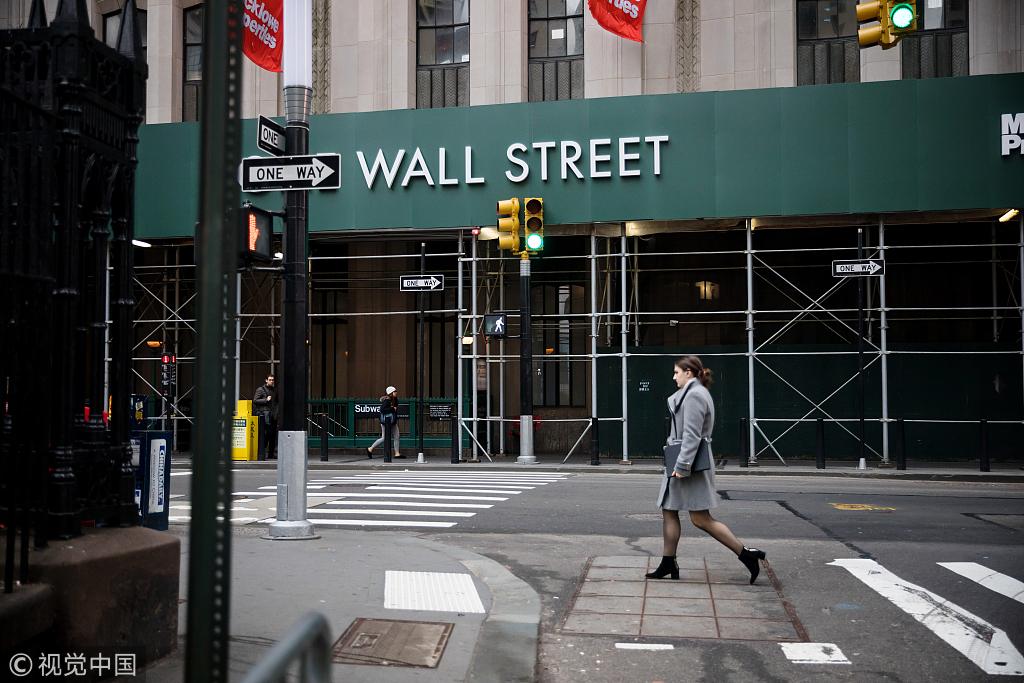
A pedestrian walks up Broadway near the New York Stock Exchange (NYSE) in New York, the U.S., December 31, 2018. /VCG Photo
A pedestrian walks up Broadway near the New York Stock Exchange (NYSE) in New York, the U.S., December 31, 2018. /VCG Photo
Overleveraging, overborrowing on a collateralized asset to finance an investment or consumption activity, was the root cause of the financial crisis.
The near zero interest rates set by the U.S. Fed, meant to reverse the economic downturn created by the "dot-com bubble" in the early 2000s, culminated in unsustainable debt levels incurred by the government, financial institutions, businesses and consumers.
Furthermore, low-interest policies limited the profit of commercial banks because they were restricted to taking deposits and making loans. Investment banks, on the other hand, were allowed to create and trade in derivatives, a financial asset derived from an existing one such as a U.S. Treasury Bill.
A derivative is a contract in which the issuer (usually an investment bank) is obligated to buy back the financial asset from an investor at some point in time at an agreed price.
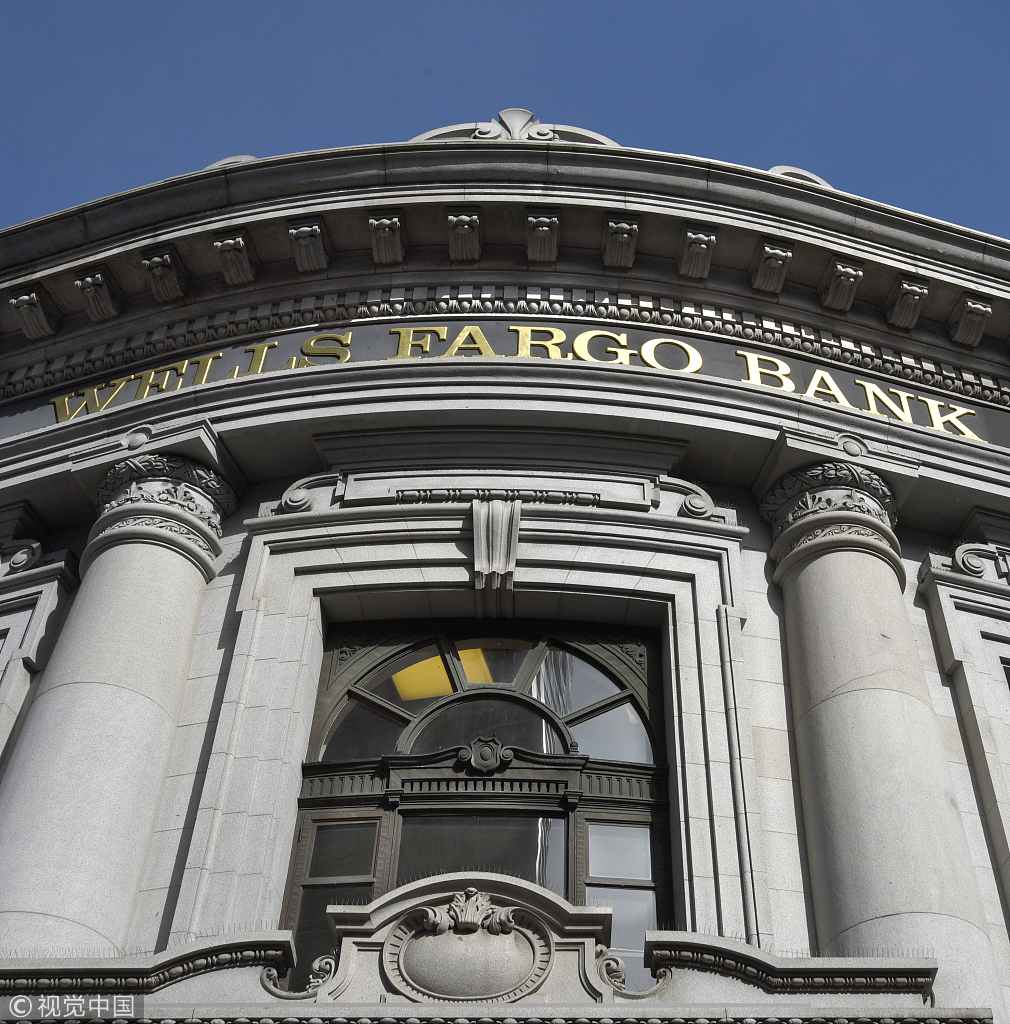
A Wells Fargo Bank located in the historic 1910 Union Trust Company building on Market Street in San Francisco, California, the U.S., September 12, 2018. /VCG Photo
A Wells Fargo Bank located in the historic 1910 Union Trust Company building on Market Street in San Francisco, California, the U.S., September 12, 2018. /VCG Photo
During this period, the buyer receives a "rent" and the bank secures additional loanable funds lending to businesses or consumers. The borrower of the money spends it on buying or for producing goods and services, expanding economic growth.
Derivative creation and trading were also very good business, earning investment bankers extremely handsome profits.
Commercial banks wanted a 'piece of the action'
The 1933 Glass Steagall Act (GS) prohibited commercial banks from investment banking because it was reckless lending that wrecked the financial system in the 1920s. While it did stabilize the financial system, the GS also restricted commercial banking business scope and profits.
Low-interest rates earned commercial banks little profits, thus prompting them to lobby powerful lawmakers in the Congress to repeal it with the passing of the Financial Services Modernization Act (FSMA) in 1999. President Bill Clinton signed it into law in 2000.
The FSMA increased the number of investment banks, setting the path to financial disaster. Competition and greed prompted the banks to become "creative" but also reckless in managing the financial system, creating and trading risky Collateral Debt Obligations (CDO).
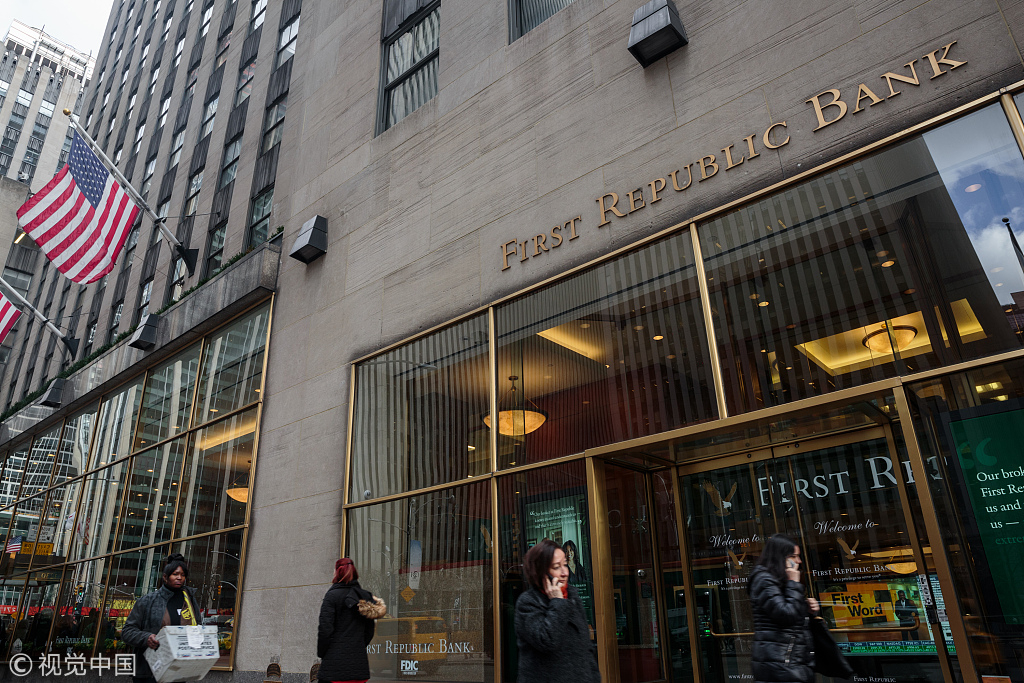
Pedestrians pass in front of a First Republic Bank branch in New York, the U.S., January 9, 2019. /VCG Photo
Pedestrians pass in front of a First Republic Bank branch in New York, the U.S., January 9, 2019. /VCG Photo
CDO was first created by the defunct U.S. investment bank Drexel Burnham Lambert Inc. in 1987. A CDO is supported by a basket of Asset-backed Securities (ABS), ranging from Treasury Bills to car loans.
CDOs not only increased banks' loanable funds, but also transferred payment default risks to the buyers.
For example, suppose Bank of China (BoC) holds one trillion yuan in mortgage and car loans and leaving them in the books only earns it interest payments. But securitizing the loan package and selling it to an investor increases BoC's loanable funds by one trillion yuan minus the required reserve ratio. Because payment to the CDO holder is directly related to the quality of the ABS, the buyer was, in fact, incurring the default payment risk.
That is, the greater the default payment risk was, the less the CDO investor received.
What's more, banks bundled and re-bundled derivative packages using the same ABS as underlying collaterals, which amounted to selling the same product many times or even indefinitely.

A trader works on the floor of the New York Stock Exchange (NYSE) in New York, U.S., December 31, 2018. /VCG Photo
A trader works on the floor of the New York Stock Exchange (NYSE) in New York, U.S., December 31, 2018. /VCG Photo
The loans issued by banks with funds from the original CDO were repackaged into a new one, resulting in an infinite supply of loanable funds and therefore loans.
To encourage CDO investment, financial institutions sold Credit Default Swaps (CDS), first developed by Blythe Masters of J.P. Morgan in 1994, as an insurance policy guaranteeing the value of the CDO. CDS was that "sweetener" that culminated in underwriting over 42 trillion U.S. dollars between 2004 and 2007.
Moreover, the three major credit rating agencies – Fitch, Moody's and Standard and Poor's – granted triple-A credit ratings to banks involved in the CDO business. This meant that CDO was a "high" quality investment instrument with very little risk.
Equally if not more damaging were "subprime mortgages," low monthly payment, not even covering the interest, for a fixed time period, let's say a year or two. Moreover, "subprime mortgage" holders borrowed money to buy appliances and cars.
At the end of the grace period, many found themselves buried under a mountain of debt which they could not repay.
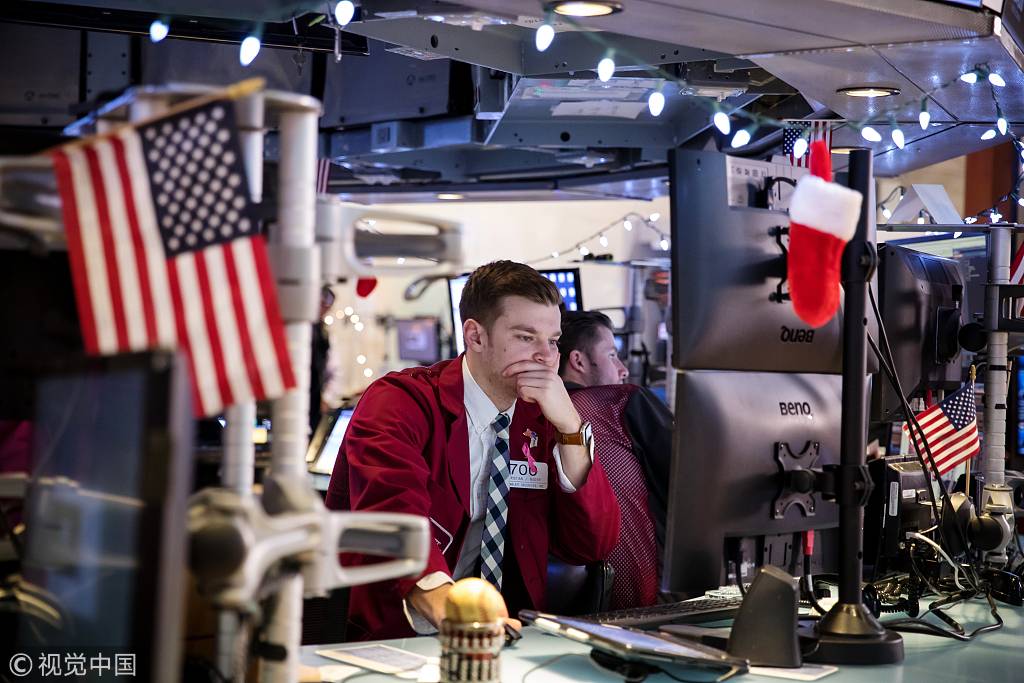
A trader works on the floor of the New York Stock Exchange (NYSE) in New York, U.S., December 31, 2018. /VCG Photo
A trader works on the floor of the New York Stock Exchange (NYSE) in New York, U.S., December 31, 2018. /VCG Photo
The end result was overleveraging occurring in all sectors of the U.S. economy, from consumers to governments, creating housing and financial bubbles.
Governments lost their fiscal effectiveness, preventing them from mounting stimulus packages. Increased non-performing loans prevented banks from making loans, creating a "credit crunch."
A comment
The U.S.-originated 2008 financial crisis changed the world, depleting the U.S. of the resources to rule the world. America must cooperate with the developing economies, China and India in particular, to address global issues, ranging from financial reforms to climate change.
(If you want to contribute and have specific expertise, please contact us at opinions@cgtn.com)

